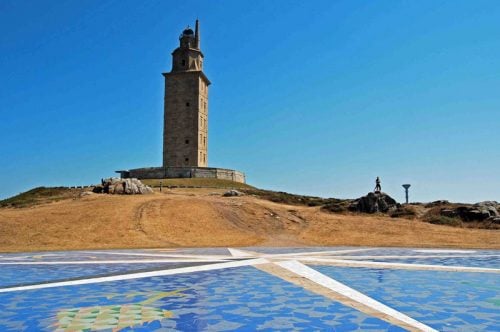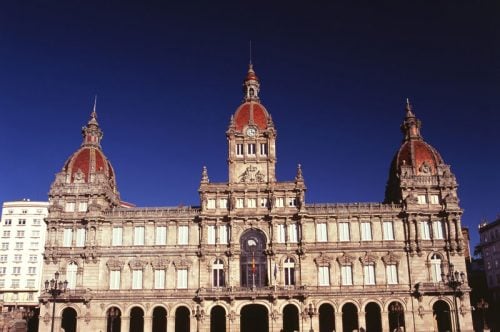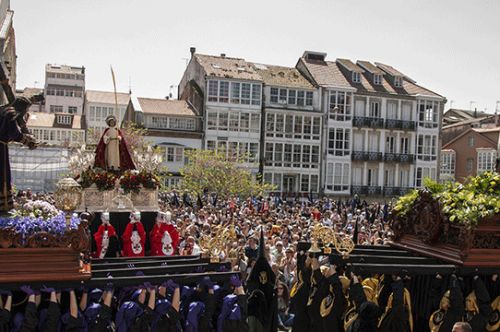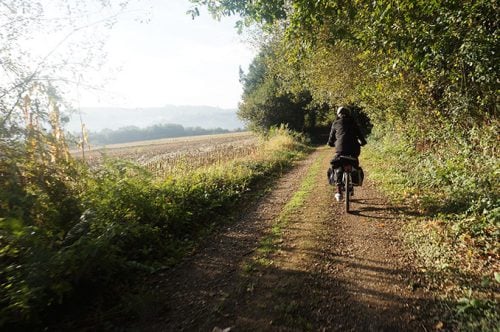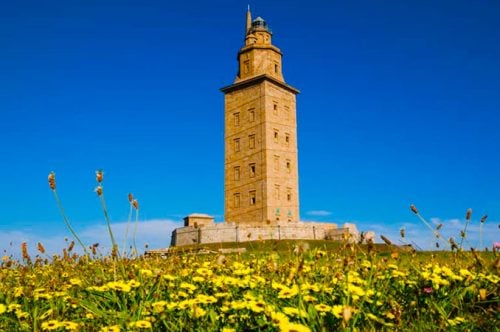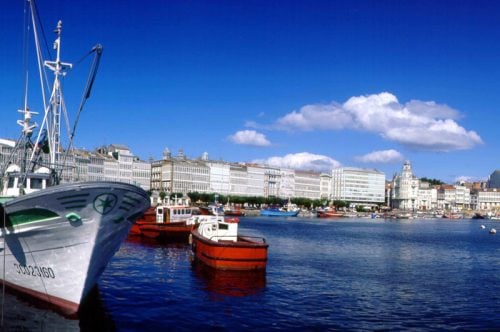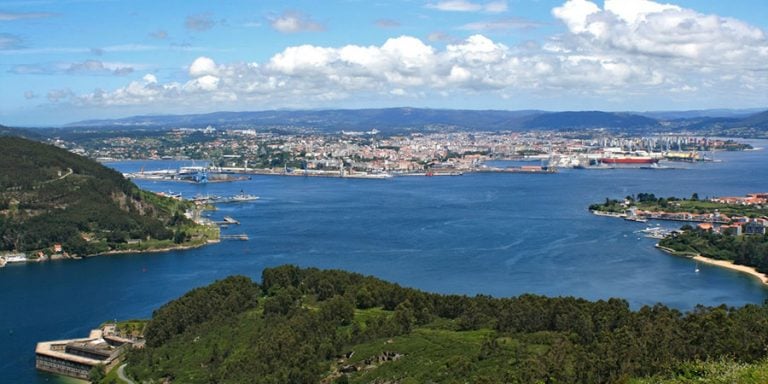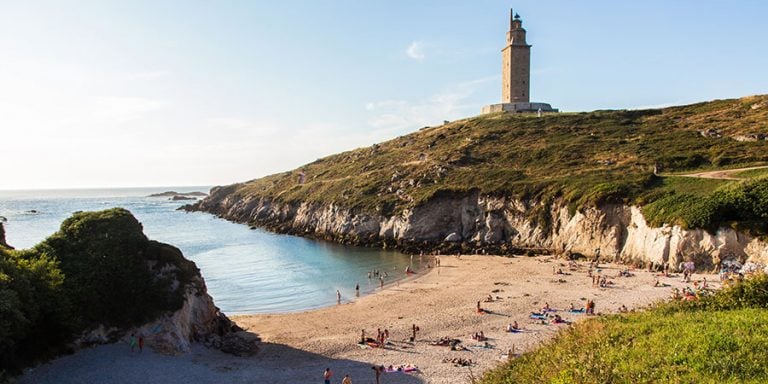The Camino Inglés
The Camino Inglés, or “English Way,” is a lesser-known yet rewarding Camino de Santiago route. Beginning in Ferrol or A Coruña, this route provides a shorter pilgrimage filled with rich history and vibrant local culture.
The Camino Inglés route covers 119 km from Ferrol and 75 km from A Coruña. Only the Ferrol route meets the minimum distance needed to receive the Compostela certificate. Historically, it was popular among pilgrims from Northern Europe, especially England and Ireland.
Though shorter in length, the Camino Inglés still offers the essential Camino experience. The route passes through peaceful woodlands, scenic countryside, and quaint villages, ending at Santiago de Compostela’s spiritual and cultural heart.
With fewer crowds, it offers a more personal, reflective journey. Galician hospitality will warmly welcome you, and the local cuisine is a true highlight. The Camino Inglés provides a rewarding and manageable pilgrimage experience for those with limited time. It’s an excellent way to enjoy the Camino’s rich spiritual atmosphere and deep cultural traditions.
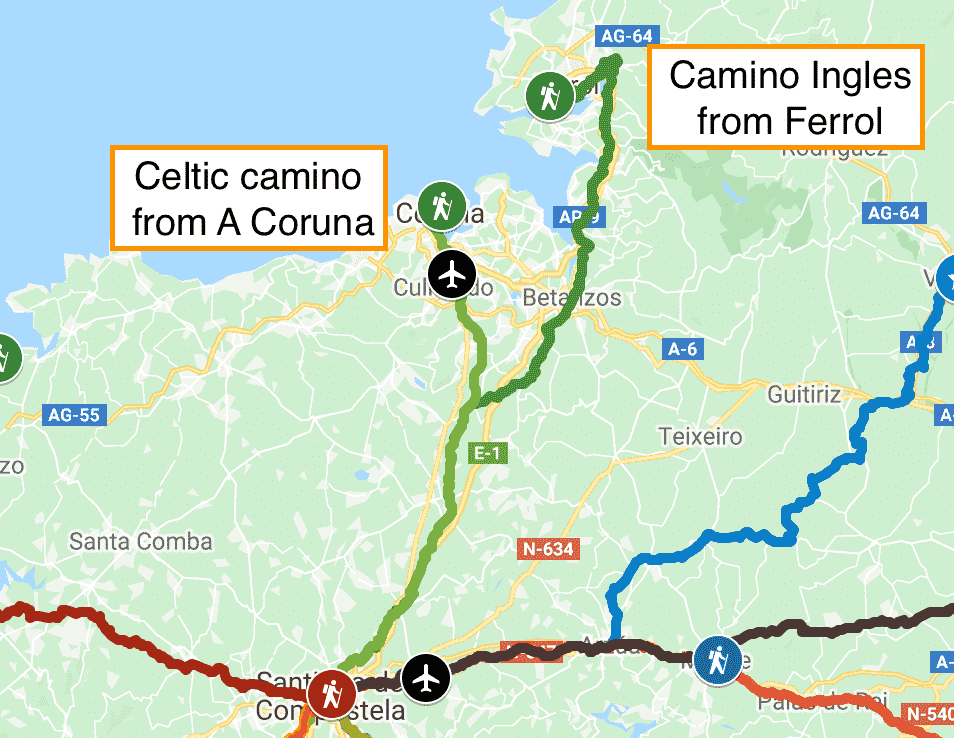
Where does the Camino Inglés begin?
Also known as the English Way, the Camino Inglés has two traditional starting points. These are the port cities of A Coruña and Ferrol. These cities were important trading routes, and pilgrims traditionally took this Camino Route from Northern Europe, Britain, and Ireland on their way to Santiago.
Although A Coruña is the larger and more attractive starting point for the Camino, only a few pilgrims begin their journey from there because it’s situated less than 110 km from Santiago de Compostela. If you start from A Coruña, you won’t qualify for a Pilgrim Certificate unless you have already completed the Celtic Camino in Ireland. For this reason, Ferrol is the more popular of the two Camino Ingles starting points.
Suggested Routes
Camino Inglés or The Celtic Camino
Camino Inglés From Ferrol.
Enjoy coastal views in the first two days as you pass charming towns like Pontedeume and Betanzos. The latter part of the Camino Inglés leads inland, crossing Galicia’s lush countryside towards Santiago de Compostela. If you’re travelling in the spring, don’t miss Ferrol’s impressive Easter festival, Semana Santa, for a truly memorable experience.
To earn your Compostela, walk at least 100 km from Ferrol or cycle a minimum of 200 km elsewhere. While cycling the Camino Inglés is possible, it won’t qualify you for a Compostela certificate. This is because the route doesn’t meet the minimum required distance.
Camino Inglés From A Coruña, also known as the Celtic Camino
The city of A Coruña is a traditional starting point, but it is less than 100 kilometres from Santiago de Compostela.
As a result, pilgrims starting in A Coruña do not qualify for the Compostela certificate and must begin in Ferrol instead.
We’ve also shared seven great activities along the Camino Inglés to help you decide if it suits your journey.
Camino Ways Route Planner
For over 1000 years, pilgrims from all over the world have walked the Camino Ways across Europe in their quest for spirituality. Making the pilgrimage to Santiago de Compostela in Spain, they encountered a variety of people, cultures and beliefs, leading to friendship and new experiences. This continues today with the Camino de Santiago being the most well known and well-loved walk in the world. More than just a walk, the Camino de Santiago is an unforgettable and unique journey for the body, mind and soul.
When to go on the Camino Inglés
The weather on the Camino Inglés is mild year-round, making walking or cycling the route possible in any season. However, most people choose to travel between March and mid-November when the weather is typically dry and pleasant.
Summer temperatures on the Camino Inglés are mild, with an average of 25°C, so intense heat isn’t a concern.
The Terrain on the Camino Inglés
The landscape is hilly, with daily ascents and descents of around 300m. The initial days along the stunning coast are a bit more challenging than the days closer to Santiago de Compostela.
What To Bring On The Camino Inglés?
Our Camino packing guide ebook is free to download. This will help you decide what to bring on your Camino.
The Sections Of The Camino Inglés
We offer 2 Camino Ingles Self-Guided Route options, but you can customise all our routes to start wherever you live.
- Camino Inglés from Ferrol (119 km)
- Camino Inglés from A Coruna (75 km)
The Camino Inglés From Ferrol Route Description
The first two walking days of the Camino Ingles from Ferrol are beautiful. You weave along the coast, soaking in the seaside views. The towns you visit along the way are quaint and pretty, with Pontedeume and Betanzos being particular highlights.
You can pause between towns to rest or enjoy a refreshing swim at A Magdalena beach. Betanzos is rich in history, and exploring its beautiful old buildings is one of the town’s great joys.
Bruma Meson do Vento and Sigüeiro are your last two stops before arriving in Santiago de Compostela. The green countryside around Ordes near the Church of San Xiao offers a final, peaceful rural moment on your Camino.
Ferrol is home to one of Galicia’s most renowned and essential Easter festivals. If you are travelling during Spring, Semana Santa de Ferrol is an absolute must-see.
The Camino Inglés From A Coruña (The Celtic Camino) Route Description
The English Celtic Camino is becoming really popular with walkers from all over the world. In ancient times, pilgrims from the UK and Ireland would have arrived by boat to the port of A Coruña to continue their Camino journey.
Starting 75km outside Santiago Compostella, the English Celtic Camino traverses the rugged Galician coastline before cutting inland and joining the English Camino from Ferrol in Bruma Meson de Vento. This walk can be completed in a four-night trip.
Recently, this route was less popular with pilgrims as they could not receive their Compostela. The cathedral in Santiago has allowed special provisions for pilgrims who walk routes such as The Kerry Camino in Ireland before they arrive in Spain to claim their certificate.
History Of The Camino Inglés
The Camino Inglés, like other Camino routes, has a rich and fascinating history. Pilgrimages from Scandinavia and the British Isles began as early as the 12th century. In 1147, a notable event occurred when a group of Crusaders passed through on their way to the Holy Land. They assisted Portugal’s first king in conquering Lisbon during his struggle against Muslim forces.
Maritime Pilgrimages from the North
Between 1154 and 1159, Icelandic monk Nicholas Bergson recorded one of the earliest maritime pilgrim routes. He travelled from Iceland to Bergen, then passed through Aalborg and Vyborg, eventually sailing down the Kiel Canal. After his sea journey, he continued on foot to Rome before heading to the Holy Land. Many Icelandic and Scandinavian pilgrims followed similar routes, often entering Iberia by sea or crossing France to Roncesvalles.
English Pilgrims and the Hundred Years’ War
During the Hundred Years’ War, English pilgrims avoided land routes through France and travelled by boat to Galicia instead. With royal permission, vessels left from cities like London, Bristol, Southampton, and Plymouth and returned with Galician goods. Coins and ceramics from the 14th and 15th centuries, which still exist in Santiago, provide evidence of these pilgrims. These discoveries were made during archaeological excavations at the cathedral.
Gifts and Offerings to the Apostle
Many seafaring pilgrims left meaningful offerings at the Cathedral of Santiago de Compostela. One outstanding gift is the alabaster altarpiece donated in 1456 by Father John Goodyear from the Isle of Wight. It shows five scenes from St. James’s life, including his mission in Hispania and his martyrdom in Palestine. This beautiful work remains part of the Cathedral Museum collection.
The Pearl Cross and Royal Pilgrimage
Another impressive gift is the “Pearl Cross,” crafted in Paris between 1375 and 1400 using gold, silver, enamel, and gems.
King James IV of Scotland donated the cross, highlighting the devotion of British pilgrims to the Apostle. Pilgrimage from England ended during Henry VIII’s reign, when he broke from the Catholic Church following his divorce from Catherine of Aragón.
Care and Shelter Along the Camino Inglés
Pilgrims of all ranks—nobles, clergy, and commoners—were welcomed in hospitals along the Camino Inglés. The route from Ferrol and A Coruña was made easier by support from the religious order of Sancti Spiritus. From the 14th century, Franciscans also offered shelter in Pontedeume and Betanzos, thanks to Fernán Pérez de Andrade’s generosity. Several pilgrim hospitals were active in Ferrol, Neda, Miño, Paderne, and Betanzos.
Pilgrim Care from A Coruña to Santiago
A pilgrim hospital dedicated to San Lorenzo was founded in Bruma in 1140 and joined Santiago’s hospital system in 1175. Along the A Coruña route, religious orders in the city offered pilgrims places to rest and recover. These included establishments run by the orders of Los Ángeles, Santa Catalina, and San Andrés. As pilgrims moved, more shelters appeared in places like Sigrás and Poulo.
Pilgrim Records and Historical Evidence
Many of these shelters had chapels and cemeteries, preserving records of the pilgrims who passed through. These included English, Nordic, French, German, and Italian travellers, proving the route’s wide historical significance. Such records confirm the Camino Inglés as a vital part of the greater network of Jacobean pilgrimage routes.
Learn More About the Camino Inglés
We invite you to visit our blog if you’d like to explore this route further. There, you’ll find more articles about the Camino Inglés to help you plan your own pilgrimage.
